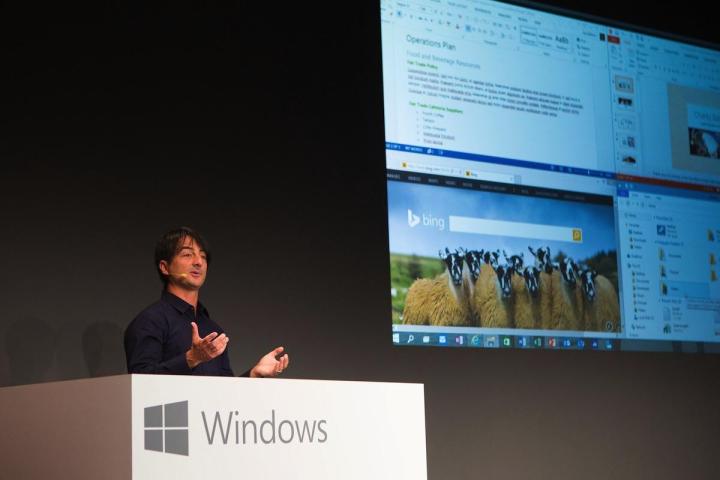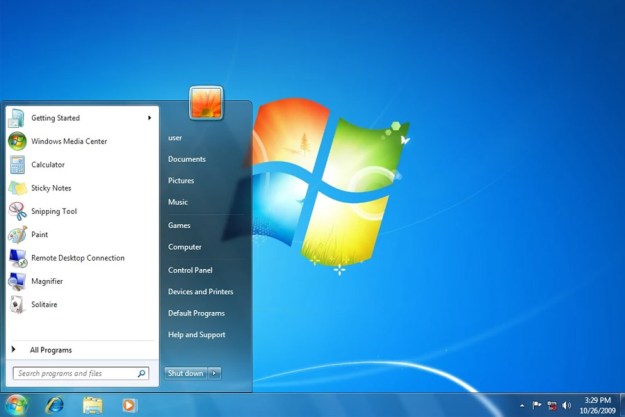
Windows 10 Home
Meant for the everyday consumer, Windows 10 Home brings all of the essential features expected of the OS to laptops, desktops, and 2-in-1 computers, ideal for at-home personal use.
In a seemingly endless lists of firsts for the upcoming operating system, Windows 10 will pioneer the successor to Internet Explorer, named Microsoft Edge (previously dubbed Project Spartan). Although Windows 10 Home will serve as the base option for users looking to surf the net, the new upcoming Internet browser will accompany every edition of the forthcoming OS. For touch-capable devices, Windows 10 Home will be compatible with Continuum, which allows users to navigate desktop functionalities with the simplistic look and feel of a mobile platform.
Along with the expected general purpose apps like Photos, Maps, Mail, Calendar, Music, and Video, the entry-level Windows 10 Home will even add Xbox One integration, allowing gamers like myself the ability to access our game libraries from the comfort of any preferred Windows 10-powered device. All of these features will also be available in other versions of Windows.
In short: This is the version most consumers will want for their PC.
Windows 10 Mobile
Opting to omit the Windows Phone brand, Microsoft announced Windows 10 Mobile back in January as a means of universalizing the Windows operating system. In contrast to Windows Phone, which offered a distinctly different app library than its desktop correspondent, Windows 10 Mobile promises to deliver parity in its software offerings. Assuming the replete product matches the company’s promises, Windows 10 Mobile could finally serve as Microsoft’s answer to the much more ubiquitous iOS and Android platforms.
Every install of Windows 10 Mobile presents a new and allegedly improved version of Microsoft Office. Described by corporate VP Joe Belfiore as a “nearly no compromise experience,” Office for mobile promises the same customary features you’re used to on your PC. Familiar programs such as Word, Excel, and PowerPoint will be ready for use right out of the box, though some Windows Phone users may find it necessary to upgrade their devices before they’re able to take advantage of these tools.
Essentially, prospective adopters of Windows 10 Mobile can, in the best case scenario, look forward to everything they love about the Windows desktop experience, optimized for portability. Everything from Outlook to the Photo app will be integrated with the desktop OS, employing a greater dependency on cloud storage services like OneDrive than ever before.
In short: This is the version of choice for Windows Mobile phones and tablets
Windows 10 Pro
Expanding upon features found in Windows 10 Home, Pro comes packed with a few additional workings that Microsoft claims will “meet the needs of small businesses,” according to a statement published on the company’s official blog. Like with Windows 10 Home, Windows 10 Pro is intended for use on PCs, tablets, and 2-in-1s.
Windows 10 Pro will institute Windows Update for Business, a forthcoming Microsoft initiative designed to help businesses reduce costs by presenting more efficient controls over security improvements while simultaneously permitting real-time software updates.
Supplying device and app management tools like Secure Boot and Device Guard, Windows Update for Business will also ensure that only trusted applications can be initiated when the device is powered on and thereafter. Lastly, it provides cloud technology support required by organizations endorsing CYOD (Choose Your Own Device) programs.
In short: PC enthusiasts and small businesses will want this edition
Windows 10 Enterprise
Expanding upon features addressed in Windows 10 Pro, Enterprise is being constructed with medium to large sized corporations in mind. Demonstrating its ideas of quintessential protection from security breaches, Microsoft assures that Windows 10 Enterprise “[will provide] advanced capabilities to help protect against the ever-growing range of modern security threats targeted at devices, identities, applications and sensitive information.”
Like with Windows 10 Pro, Windows 10 Enterprise will be packaged with Windows Update for Business while also adding Long Term Servicing Branches, allowing businesses to refuse functionality-centric software updates while accepting only security-related amendments.
This version of the operating system will be only distributed through the Volume Licensing program, meaning Windows 10 Enterprise will be intended for purchase in bulk. Consumers typically aren’t allowed to order the operating system through this program.
In short: Established businesses and other large organizations should go for this; consumers can’t easily purchase it
Windows 10 Education
To those complaining about an over saturation of Windows variations this time around, you may want to consider that most of these won’t even be intended for public use. Akin to its predecessors, Microsoft invites educators to secure a version of Windows 10 contrived explicitly for academic purposes.

While it’s unclear how it differs specifically from the alternatives, Microsoft has revealed that, like Windows 10 Enterprise, Windows 10 Education will be distributed through its Volume Licensing program, and that both schools and students will be equipped to upgrade from the vanilla Windows 10 Home and Windows 10 Pro edition using designated procedures scheduled to be announced in the near future.
In short: It’s not entirely clear how this will different from Enterprise, this presumably will be the edition of choice for schools and universities
Windows 10 Mobile Enterprise
Similar to Windows 10 Enterprise on the desktop, Windows 10 Mobile Enterprise is being developed for users of Windows-enabled smartphones in the workplace. Likewise, most of its features bear resemblance to the standard Windows 10 Mobile OS.
Once again available only to Volume Licensing customers, Mobile Enterprise aims to offer a Windows 10 Mobile facsimile with the consent of corporate regulation. It lets organizations administer software updates and control system modifications by users. Meanwhile, features related to security and innovation will be added automatically, ensuring real-time protection of users while abstaining from the hindrance of organizational oversight.
What’s more, variants of Windows 10 Enterprise and its mobile counterpart will be installed in industry technologies such as ATMs, retail POS devices, handheld terminals, and robots found around the globe.
In short: This is for organizations that want to roll out a standardized device policy for employee phones and tablets
Windows 10 IoT Core
Perhaps the most unusual, and interesting, rendition of the new operating system arrives in the form of Windows 10 IoT Core. This new version of Microsoft’s historically consumer-focused operating system will, interestingly enough, run customizable versions of Windows 10 on household appliances like smart thermostats, factory machinery, and yes, even toasters.
Instead of using your thermostat to play Hearthstone, like one might surmise at first glance, the IoT version of Windows 10 will instead emphasize the connection between communication devices and household appliances. For instance, with the help of IoT core, the day might be looming when preheating your oven with the assistance of a smartphone becomes commonplace.
Still, Windows 10 IoT won’t be restricted to utilities of the everyday. Steve Teixeira from Microsoft’s IoT group expressed the flexibility of IoT Core at this year’s Build developer’s conference when he said, “Whether it’s Hololens or Raspberry Pi or Windows desktop or phone [it’s all one platform]. You can extend that to the IoT editions … It’s the same platform … and it’s Windows, so you know it can go into enterprise.”
In short: This will be of interest to companies building IoT devices and enthusiasts looking to experiment with Windows-compatible gadgets
It’s a cluster, but that’s OK
Moving forward, it’s only a matter of months (maybe even less) before the imminent release of Windows 10. If you were previously overwhelmed by the number of differing versions of the operating system, I trust that I’ve cleared up at least some of the confusion.
Ultimately, it’s a negligible concern. Coming in contact with with more than two of these editions in your day-to-day routine is unlikely and, based on what Microsoft has declared so far, we can infer that little thought will be invested when you do decide to upgrade.
Editors' Recommendations
- Microsoft announces a new threat to push people to Windows 11
- 7 beloved Windows apps that Microsoft has killed over the years
- Microsoft plans to charge for Windows 10 updates in the future
- I love Macs. But here are 5 reasons I keep coming back to Windows
- If you have an AMD GPU, stay away from the latest Windows Update




